I’ve decided to continue my trend of analyzing, defining, and explaining literary genres by illuminating one of my favorite and often-misunderstood genres; gothic fiction.
So what is gothic fiction? Let’s start at the very beginning…
Gothic History
The Goths were a Germanic tribe that battled the Roman Empire for centuries and played a large role in shaping Medieval Europe as well as the English language as we know it. You might assume that “gothic architecture” came from these people, but you’d be wrong. During the Renaissance, people began to rediscover Greco-Roman architecture. They called it “gothic” not because it was the building of the Goths, but because they considered it “barbaric” like said tribe. The name stuck.
Gothic Fiction
Now we get to fiction. The gothic novel began around 1780 and grew in popularity and established itself as a genre into the 1800’s. The genre came to be called “gothic” because so many of these books took place in castles, abbeys, mansions, and other buildings of the gothic architectural style (which wasn’t really Gothic; how’s that for convoluted?).
Of course, setting a book in a gothic building isn’t enough to make the book gothic. Gothic literature became trendy enough to become its own genre, and like all genres, it established its own set of staples, messages, and tropes. At its very root, gothic fiction is a blend of romance and horror. Love and fear. Beauty and grotesquerie. It uses this contrast to heighten each.
If we focus on this juxtaposition, many of the gothic staples become quite obvious: the beautiful maiden, locked away by a villain; the exquisite old mansion, now in ruins; the touching love story, shattered by dark secrets. This constant contrast of the darkest and most lovely elements lends the works an exquisite sense of drama that often borders on melodrama, which in turn opens up the genre to parody of all scopes and intents – another common feature of gothic literature.
The final staples of the genre are atmosphere and setting. These are often utilized to such a degree that they cause a minimization of character. The protagonists in gothic novels might be nondescript, but the atmosphere is a pervasive sense of dread so thick you could walk on it. Gothic setting goes back to the genre’s roots in architecture. In early gothic novels, the buildings are intensely–you guessed it–atmospheric. The choice of using once-splendid buildings that are now crumpled in rot and decay is often believed to be a commentary on the state of society.
Contemporary gothic novels don’t have to use gothic architecture, but they do uphold this tradition of settings so vivid they become not just an atmosphere but an entire character. If you remove the setting of a gothic novel, the atmosphere disappears and the story disintegrates. Thus “southern gothic” makes such use of its southern setting that it permeates every aspect of the novel; contemporary gothic does the same with more modern locations, and so on.
Along with staples, there are tropes. Tropes are not necessary, but are great ways to help readers recognize when what they’re reading is gothic. Common gothic tropes include: the virginal maiden held against her will, the oppressively evil villain, ghosts (both real and perceived), incest (both real and perceived), thugs/bandoliers/other gangs of bad guys, members of the cloth (both corrupt and holy), prophecies, omens, and other inescapable futures inherited from the past, the supernatural (both real and perceived), skeletons, locked and hidden doors and passageways, mystery, and – of course – forbidden love.
Just for fun, let’s take a look at one of my favorite examples: Carrie Ryan’s YA zombie novel The Forest of Hands and Teeth. Bet you thought it was a regular old dystopian horror novel, didn’t you? I happen to believe it’s a gothic novel disguised as a zombie novel. Let’s break it down. [WARNING: Some mild spoilers ahead.]
- horror: Mary’s village lives in constant fear of the Unconsecrated (zombies) breaching their fences.
- romance: Mary is in love with Travis.
- drama/melodrama: Love quadrangle; complications.
- vivid atmosphere: The Guardians, the Sisterhood, the Unconsecrated, the Forest of Hands and Teeth… you might be able to guess that the atmosphere is overwhelmingly vivid.
- setting as character: Check. The village, the pathways, the forest… all striking. The book would fall apart without this setting.
- the virginal maiden held against her will: Mary is trapped in her small town–literally fenced in.
- members of the cloth: The Sisterhood, implied descendants of nuns, is the dominant authority.
- bands of bad guys: The Guardians keep all zombies out… or are they keeping the villagers in check?
- inescapable inheritance: Mary is obsessed with her mother’s oral history of the world before the apocalypse, including rumors of the ocean beyond the forest.
- the supernatural: Zombies!
- locked doors, secrets: The Sisterhood seems to hold the truth about the world before, but won’t tell.
- architecture: The ruined tower that Mary visits to get away.
- a mystery: The fences around the town branch off into two fenced-in pathways. Where do they lead? No one knows. Mary wants to find out.
- forbidden love: Although Mary loves Travis, he won’t marry her because his brother is in love with her.
- ruins and decay: The zombies are literally decaying and the tower is literally in ruins, but more importantly, when you look at it this way, the gothic message of the deterioration of society is only a hop, skip, and a jump away from dystopia, isn’t it?
Have I convinced you yet? We can do the same game with Rebecca, Wuthering Heights, Flowers in the Attic…
Gothic as a Euphemism for Horror
As I’ve covered before, the horror genre as we know it today blossomed from gothic fiction. The fact that said subgenre actually gained enough popularity to become the dominant genre creates an interesting peculiarity: “gothic fiction” is now often considered a subgenre of “horror,” even though it was originally the parent genre.
The fact that horror has roots in gothic fiction does indeed blur some lines. And perhaps because horror as a genre struggles with literary credibility, “gothic” has become a euphemism for “horror.” If book sellers are afraid that marketing a novel as “horror” will chase away potential readers, “gothic” sounds softer and is generally a less-stigmatized word. Likewise, many closeted horror fans will call their favorite horror novels “gothic novels” to imply quality or literary merit that others don’t believe horror can obtain.
As a writer who is actively involved in both horror and gothic fiction, this drives me absolutely crazy, but it doesn’t change the fact that it’s true. Stephen King novels, for example, are often called “gothic fiction” by readers who don’t want to be associated with blood and gore, but King quite simply doesn’t write gothic literature; he writes horror. (There might be some exceptions, perhaps Bag of Bones, but it’s been too long since I’ve read it to be certain. ‘Salem’s Lot, for example, is not gothic; it’s straight horror. The fact that it’s good and has some real value doesn’t change that.)
Unfortunately, this use of gothic as a euphemism for horror confuses the terminology for the casual reader, making it harder for horror to gain respect as well as making it more difficult to hunt down authentically gothic novels.
Note: It’s also worth mentioning that gothic, as a combination of horror and romance, has also had great ‘spin-off’ success in using predominantly horror or predominantly romance. Thus we hear books categorized as “gothic romance” or “gothic horror.” Generally what you can expect from these subgenres is a healthy dose of gothic style and themes, but leaning more heavily toward either a love story or the scares.
Goth Subculture
Others know of “gothic” as a way to describe a certain clique in high schools everywhere. This subculture of black clothes, shocking makeup, and moody music does take inspiration from gothic literature, as well as from the subsequent emergence of the horror genre. The strongest tie here is to the concept of romance mixed with horror, so many “goths” play with mixing beauty and startling imagery, whether in their personal style or artistic tastes. A good example would be clothes styled after ornate Victorian frocks, contrasted with “hard” things like safety pins, piercings, and tattoos.
Other Gothic Art
And of course, fiction wasn’t the only art form to get in on the strange and convoluted history of gothicism. At the same time that gothic architecture was gaining steam, a sister-style of art blossomed as well, which can be seen showcased in and often intertwined with gothic architecture in the form of stained glass, sculpture, and fresco. And as with gothic fiction, this style of art evolved and is often referenced in what you’ll hear called “modern gothic,” which picks and chooses which elements of the genre it wants to use and comment on–as does much “modern gothic” literature today.
There you have it: the long, complex, and multi-faceted breakdown of what gothic means. When you know a little history and accept that the same word means different things to different fields (art, history, architecture, fiction, culture…), it becomes clear that these are actually many things connected by a very thin thread. Hopefully I’ve helped you follow that thread to a better understanding of gothic fiction.
And how about that Forest of Hands and Teeth, huh? What’s a novel you’ve read that you now recognize as gothic fiction in disguise?
Like this post? Check out all posts in the What is Genre? series!
Share this:
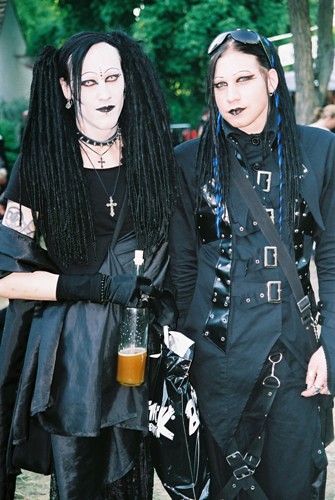
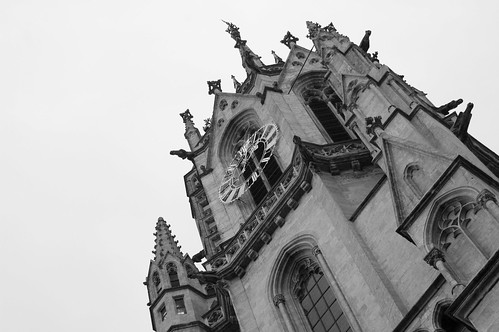
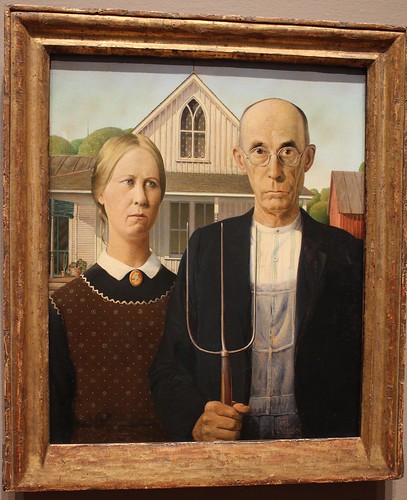


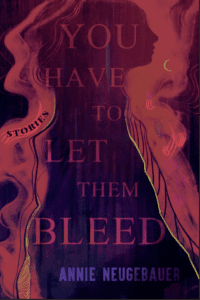
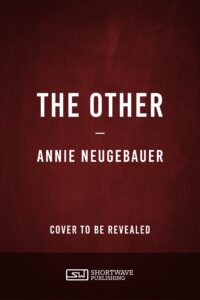

This was really interesting and very informative too. In the WIP I’m currently querying, the MC describes someone as “possibly Goth” (he’s not) and I did some research at the time of writing it — I found nothing this complete or helpful. Thank you for the more complete picture!
Oh, wonderful! That’s nice to hear. Thanks Julia!
When I read your title, I hoped there might be gargoyles. Alas no, or maybe yes. Atmospheric architecture, beauty and grotesquerie. They weren’t named, but you talked about them. 🙂 I learned so much reading this. Thanks! (Now I have to go read up on your other genres that I missed.)
Thanks Marialena! Well, I’m no expert, but I do believe gargoyles are part of the gothic architectural style (or at least can be?). A quick google doesn’t give me a definitive answer as to whether they came from that style or are just utilized in it, but I’ve definitely seen gargoyles on gothic cathedrals, etc. Glad I brought a little something new to you!
Great post!
Thanks! I’m glad a gothic romance author approves. 🙂
Really interesting and informative!!!
Thank you!
So weird. I’ve been listening to Sisters of Mercy all morning, and now you make this post.
Ha! I had to look them up. The more you know.
Verily enjoyed this post. My gothic novel is still bouncing around in my head, rearing like a bull in a china shop to get out, so I found this post very helpful. And yet again, the reminder that the marketing big-wigs keep trying to dismantle our genre and feed it back to readers piecemeal, in manageable, often pre-masticated pieces. This does not please me. Also, I will totally be bumping The Forest of Hands and Teeth up on my reading list 🙂
Awesome! Thanks Ashley! I’ll be curious to hear what you think of TFHT. 🙂
Wow, Annie. You outdid yourself on this one… such a thorough explanation. I love that I always, always learn something new from you when I visit your blog. Now I’m going to be applying “Goth principles” to everything I’ve ever read or seen at the movies. Also love the history lesson re: gothic architecture, etc.
Aw, thank you Melissa!
That was a very impressive article, and it even sounds like you had fun researching it! Dean Koontz made his living writing Gothic novels under pen names at the beginning of his career. He’d churn them out to the publishers’ orders. Doesn’t lend much credence to it being a quality sub-genre, but as you pointed out, it was the forerunner of modern horror. Something to be grateful for. 🙂
Wow, I didn’t know that about Koontz. I’ll have to look those up and give one a read just because now I’m curious. Gothic, like any genre, can be done well or done cheap, so that doesn’t surprise me at all. I did have fun doing the research for this, although I did it a long time ago when I was drafting my own gothic novel (and reading all the ones I could get my hands on… for “research”).
I believe he wrote all his Gothics under Deanna Dwyer. See more info of all his books/pen names here. (Five Deanna Dwyer books halfway down the page.) http://web.tiscalinet.it/luigiurato/pseudo/pseudo1.htm
Perfect! Thanks Lexa!
Your series breaking down the elements of genre is one of my favs, Annie. What genre is next?!
Thanks Cynthia! I’ve noticed a lot of confusion over magical realism, so maybe that?
Annie, that was really interesting! I waited to read until I could give it my real attention; I loved your other essays in this series. I used to be a huge fan of writers like Faulkner, O’Connor, etc., and this makes me want to go back and reread. What would you say your favorite book that represents Gothic?
Thank you! That’s a tough question. When it comes to just a good fun read, I absolutely adore Daphne du Maurier’s Rebecca! But I think Wuthering Heights is also a brilliant book, and much more complex. The original VC Andrews series (Flowers in the Attic) is disturbing and vividly memorable. And as for modern gothic, I was blown away by Matt Bondurant’s The Night Swimmer. Don’t make me choose!
I’d say Donna Tartt’s “The Secret History” qualifies as modern gothic, though the central story is actually a sort of complicated circle of friends, not a romance (though there is some of that, and some of the relationships are…interesting). It’s atmospheric and melodramatic, with lots of secrets and mysteries and an old house out in the woods. There’s even a hint of the supernatural. Donna Tartt’s writing is dense and descriptive and absolutely suited to a gothic novel.
Finally added A Forest of Hands and Teeth to my to-read list. Definitely past time I read it finally!
Ooo, that sounds delicious! I’m adding The Secret History to my to-read list today. Thanks Lura! And let me know what you think of TFHT!
I learned so much, as usual. I love when you do these posts. I have suggested already that you see if either bookriot or readwritelearn (I think that’s the name) would take them even though they’ve been published on your blog? Worth a try!
I think you might have, but I forgot. I’m going to make myself a note right now to look into it. Thanks so much, Nina!
Loved the breakdown. And The Forest of Hands and Teeth has been sitting on my shelf for a long time. Sounds like I need to pick it up. : ) My first experience with anything gothic was probably Flowers in the Attic. Not sure if it would fall under gothic romance, but there was the incest, the trapped virgin(s), locked doors, the horrible grandmother/villain, and the setting of the attic and the old, fancy house. Now they market that book as YA with this sunny cover and the brother and sister in an almost kiss. Had to do a double take when I passed that one. o.0
Thanks, Roni! To be honest, TFHT is not my favorite book in the world, but it’s got some really wonderful aspects and it makes a great example of gothic fiction. And Flowers in the Attic does too — absolutely! I would call it straight contemporary gothic, because the romance is very well-balanced by the horror, often, as you know, even at the same time, considering the incest. I’m shocked that they would market it as sunny YA. That just seems like a horrible idea to me! Glamorizing incest isn’t cool; it being creepy and disturbing is a pretty important aspect of the story…
You don’t know how much I just fangirled over that ‘Forest of Hands and Teeth’ reference. I’m a huge fan of the series. 🙂
Hehe, that’s awesome. I’m glad someone already familiar with the book found this post to fully understand my analysis!
Just thought of this in the middle of Math class (third day of school–kill me now). I’m a fan of ‘The Mortal Instruments’ series by Cassandra Clare, and I think it may be a gothic novel (it’s generally genrefied as urban fantasy) in disguise:
*(Spoilers ahead!)*
Horror: The books focus on demon-hunters and evil relatives.
Romance: Clary & Jace, Simon & Isabelle, Magnus & Alec…. There are too many examples to count on one hand.
Drama/Melodrama: Jace and Clary are believed to be siblings for a bit, Sebastian (the villain for the last half of the series) is actually Clary’s brother, Valentine (the villain for the first half of the series) is Clary’s father but raised Jace. (Quite a few more, but that’s all I’m going to name for now.)
Vivid Atmosphere: Hunting demons, living inside an old invisible church, an invisible country, faeries, werewolves, vampires, warlocks, and all of their respective inner politics. Need I go on?
Setting as Character: Their own invisible country with its own geography, landmarks and cities, they live inside an abandoned church, The Silent City where monk-like Silent Brothers live, etc.
The Virginal Maiden Held Against Her Will: Clary is held captive by either Valentine or Sebastian multiple times.
Members of the Cloth: Monk-like Silent Brothers and Iron Sisters were present many times.
Bands of Bad Guys: The Dark Shadowhunters towards the end of the series, and demons.
Inescapable Inheritance: Both Jace and Clary have extra angel’s blood in them, so they have special powers.
The Supernatural: Demons, angels, werewolves, fey, vampires, warlocks, and demon hunters abound.
Locked Doors, Secrets: The Clave (a Shadowhunter kind of government) is very secretive about many things, and the Silent Brothers know things that only the Silent Brothers know.
Architecture: Again, they live in an ancient invisible castle and there’s an invisible city with some amazing creativity on the design. And where those monk-like Silent Brothers live is very complex and artistically created.
A Mystery: A mystery wasn’t the central focus of the plot, but ‘Is Clary really Jace’s sister?’, ‘Where is Sebastian?’, ‘Why did Valentine lie all that time?’, & many more were common questions asked by readers while reading the books.
Forbidden Love: Well, for a while there, we thought Jace was Clary’s brother. I rest my case.
Ruins & Decay: I hate to bring it up yet again, but ancient. Falling apart. Church. And where the Silent Brothers lived was filled with bones and ashes.
See my point? Normally, those books are classified as urban fantasy, but they’re apparently gothic too! 🙂
Wow, this is one of my favorite comments ever! I love, love, love that you broke down a different book. I haven’t read the The Mortal Instruments series (I want to now), but your breakdown makes it absolutely clear that they’re gothic novels in disguise. Great job, Katy! But don’t get in trouble in math. 😉 I’m going to add those to my to-read list!
Really? Your favorite? Awww! Thank you! 😀 I was feeling…inspired. Breaking down the books was no problem, either because of such a big fan I am. (I know everything about the books.) I’m glad you liked it!
(And don’t worry–I do pretty good in math too!) 🙂
Pingback: Hero Meets Nemesis |
Pingback: 4 Intriguing Gothic Fiction To Read By Contemporary Writers